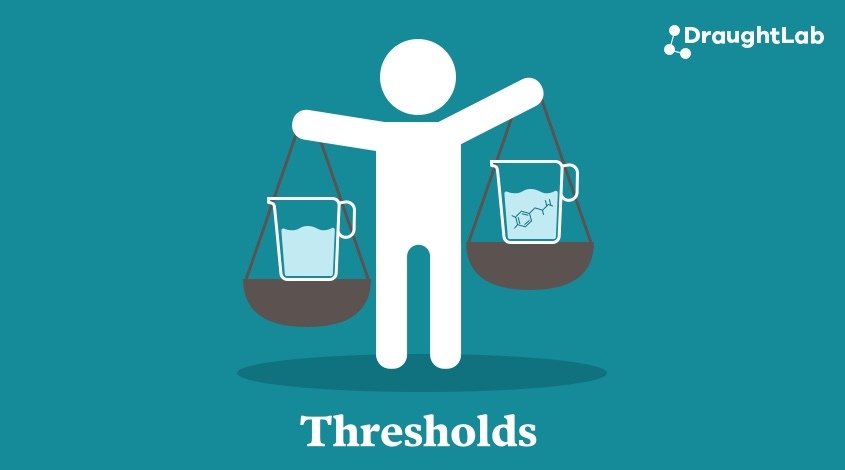
Our senses are very much like measuring devices. We are constantly taking “readings” of the outside world and using those measurements to describe our experience. Our senses also have limits, and when it comes to flavor compounds, there are minimum concentrations required before we can start recognizing and identifying them. These are known as sensory thresholds.
We get threshold questions often, especially around panelist training and data analysis. Of course, sensory science has standard definitions and methods to help guide you, but it can be a slippery slope. We have even seen programs burn out because of them.
So, let’s talk about thresholds…
“Perhaps this is the place to warn the reader that a threshold is not a constant for a given substance, but rather, a constantly changing point… from non-perceptible to easily perceptible.”
This is the opening quote on thresholds from the Meilgaard, Civille, and Carr textbook on Sensory Evaluation (2007), and it’s a common theme.
Our thresholds are changing all the time depending on numerous factors. Even the act of testing for a person’s threshold will change it due to repeated exposures to a compound. Choosing to measure at a human’s sensory limits carries a lot of baggage, so before you go on that journey, make sure you do your homework.
Practical Applications
Despite the up-front warnings, there are practical applications where it is important to identify substances at very low levels. Contaminants are the most common, from air pollution to compounds that reduce acceptability in food, beverage, cosmetics, etc.
In the case of natural gas, which is both combustible and odorless, a contaminate is ADDED to make sure that we can identify leaks in our home. Mercaptan has a rotten egg smell and is injected at an amount that is above our average threshold to make sure we can detect it.
Definitions
When discussing thresholds, there are 3 main types:
-
Absolute Threshold
The lowest concentration of a substance that you can detect. It’s the point at which you know something is different, but maybe not know what it is.
-
Recognition Threshold
The concentration where you can detect a difference AND identify it correctly. In other words, the first moment where you can confidently say, “this is different and it’s mildly sweet.” It is also the most common used threshold using sensory analysis.
-
Terminal Threshold
The point at which there is no increase in perceived intensity. Above this point, we won’t notice any differences and pain may even occur.
Measuring Sensory Thresholds
Although there are different approaches to measuring sensory thresholds, most organizations have settled on the Method of Limits as the standard. Panelists are presented with 3-AFC tests in ascending or descending concentrations. These tests are then repeated several times, and a threshold number is calculated. A group threshold can also be calculated with the proper amount of panelists and data.
Suffice it to say, this testing will require a lot of samples and (often expensive) flavor spikes to complete per person. Regardless, make sure to choose the method that best suits your needs, or feel free to reach out to us for more information.
How We View Thresholds
In general, most sensory questions don’t require measuring at threshold or we find ways to remove them from the equation. For example, we work with a lot of companies that are testing for off-flavors that impact the acceptability of their products.
Acceptability is the key word here, because it implies the threshold of their consumer’s experience, not of internal panelists.
This means that they don’t need to identify off-flavors at the lowest level possible, they only need to identify them at a level lower than their customer. Basic flavor training and running a consistent panel will have your internal panel identifying offer flavors at lower levels than your consumer.
As it is with everything in sensory, make sure that whatever path you take is providing value and is worth the cost and effort to do right. If you’re not sure if threshold testing is right for you, or if you need some help getting paired up with the right methods, let us know and we’ll be happy to help.
DraughtLab offers practical and approachable Sensory Analysis Solutions that deliver real-world value to food and beverage companies. Visit our website or reach out to us at info@draughtlab.com to learn more!